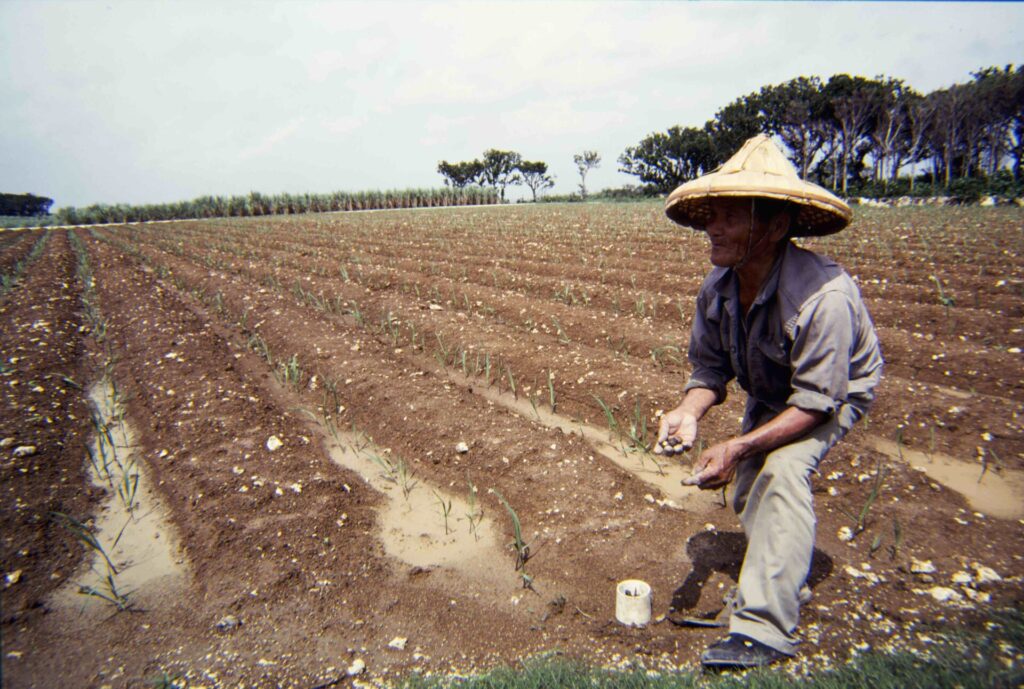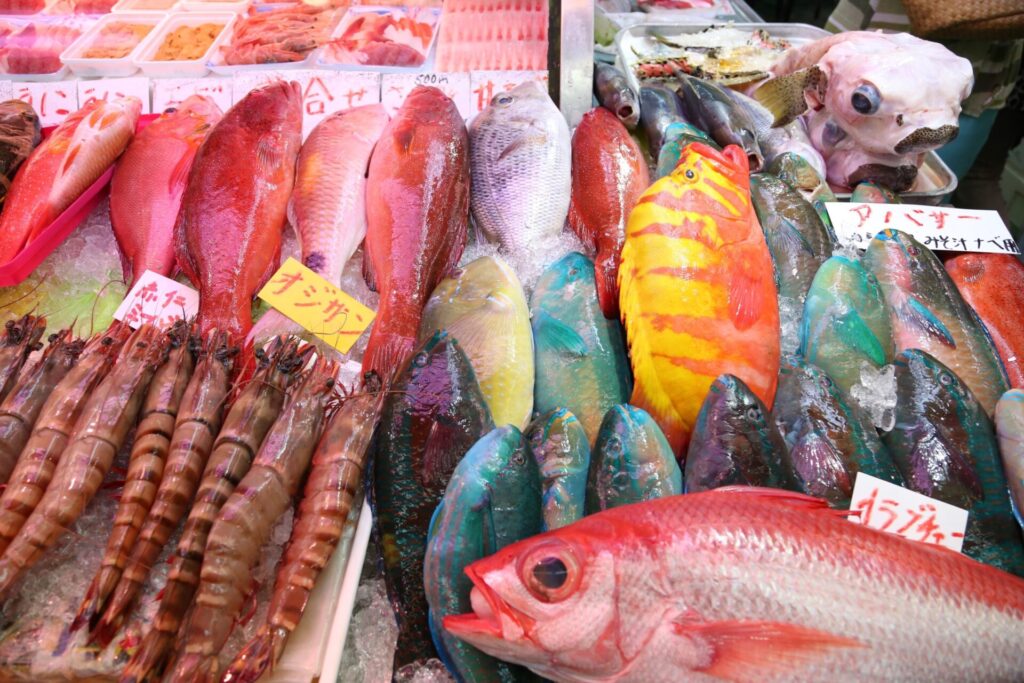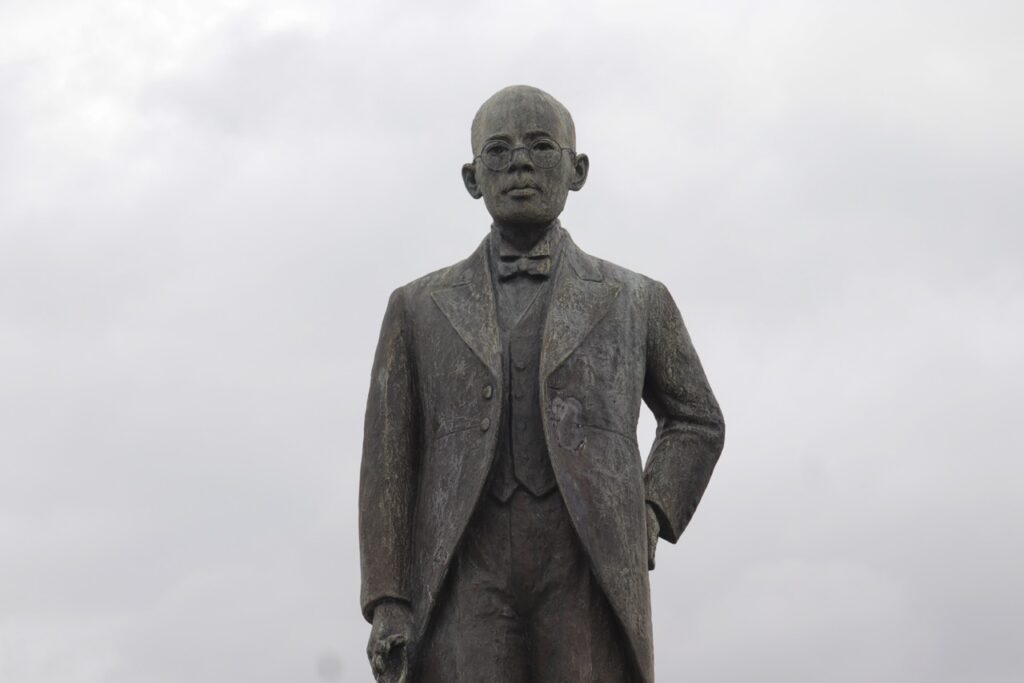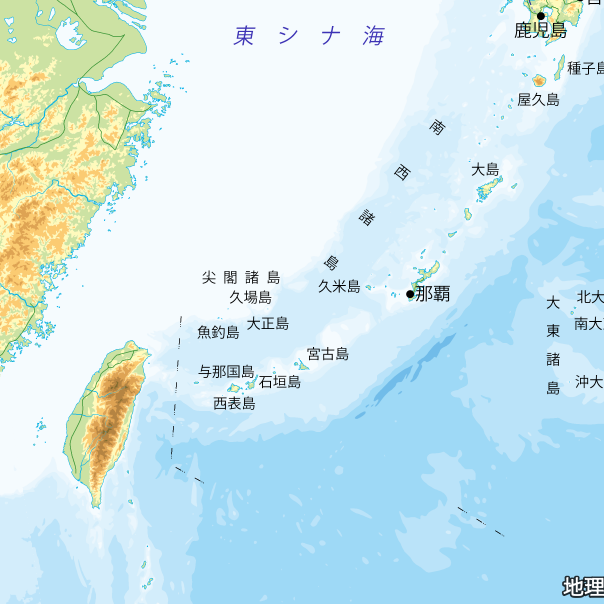Sakurazaka

Photo: TARUMI Kengo
They say that long ago bandits and highwaymen began to appear in the Makishi district in Naha. The Ryukyu Kingdom’s administrative government suggested that people become bandits and highwaymen because they have no village, so a village should be made for them. But the people ignored this order, so the government forcibly moved them there from their Oroku districts.
After the war, rows of graves both big and small lined Kibogaoka Hill, located behind the Makishi International Shopping Center (which has since become a park)1.
There was also a cave in the hill, and before the war, this cave served as a workplace for local women weaving Panama hats. During the war, it became an air-raid shelter.
The view from Kibogaoka Hill was magnificent, looking out on both distant Shuri Castle and Oroku. In July of 1952, Sangoza Theatre Company completed the construction of a theatre at the top of the hill, but for a time, people teased that the theatre even welcoming habu serpents and gusō visitors from the other world.
In no time at all, the city of Naha excavated Kibagaoka’s cliff face, making a magnificent hill street which connected to the heart of the shopping district on Heiwa-dori Street. The municipal government aimed to make this area one of the must-see spots in Naha, so they took one hundred cherry trees from the mountainous Yanbaru area of northern Okinawa and planted them on both sides of the street.
As soon as the street was finished, restaurants, cafes, cabarets, and clubs popped up around the theatre. Soon after, an organization, the Sakurazaka Street Committee, was formed to plan the revitalization of the area. The building boom continued, and virtually all of the hundred cherry trees were felled.
Unlike other social hubs in Okinawa in those days, American soldiers were not welcome in the Sakurazaka area, and only a few Sakurazaka establishments boasted A-signs. While American soldiers almost never visited the area, Okinawan couples descended on Sakurazaka around Christmas, crowding the streets.
In recent years, Sakurazaka’s neighborhood society has calmed in comparison to what came before. Properties like bars are resold often, which means sometimes hostesses don’t even know the landlords of the bars they work in.
Bar walls are thin, so you can hear the karaoke being sung next door, and lots of places still have jukeboxes. Some places aren’t connected to municipal gas, but they keep gas canisters under the counters, busily cooking away bar snacks. Often bar Mamas might be in their sixties or seventies, and it’s not uncommon for their daughters to be working as hostesses, with the whole establishment supported by customers who are former schoolmates from the same villages.
There are a lot of people who haven’t forgotten how, back in the day, Mamas let them drink even though they had no money, and now that they do earn a living, they still come to drink at these tiny, old places, saying, “I’ve got to have some of Mama’s sōmen noodle chanpurū.” These places don’t have someone out on the street barking customers, and in general they’re cheap and homey.
A few of the cherry trees from that time still remain in Kibogaoka Park2.
Editor’s Note:
- Currently Tenbusu Naha, a complex facility.
- Naha City Makishi-Tsuboya Road, which cut across the Sakurazaka area to connect Kokusaidōri and Naha City Kainan Road, opened in 2012~2017 (partially~fully.) Currently, redevelopment is ongoing around this route.




































































































































































































































